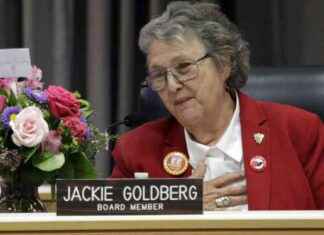Isabel Porras Novalbos published ‘Without Strings’, a guide to promote the use of the bicycle among women
One of every ten spaniards do not know how to ride a bike, and 85% of those who “do not know” are women. Or not learned from the girls, or him, and took fear, or ran into the invisible wall of resistance to cultural, that still linger. Because the bike, as it is known, has always been a “suspect,” a symbol of autonomy and liberation, from the times of the suffragettes.
Against the inequality of the two wheels is rebel Elizabeth Porras Novalbos, in madrid 37 years settled in Seville, where he has contributed to give the impetus proverbial from Santa Cleta, the “sanctuary” of the bike in the neighborhood of la Macarena. “Learn to ride a bike and be more free”, was the claim that they used to convince the sevillanos and sevillanas still I resisted the pedal…
another man came to claim, but almost all were women, 30, 40, 50 and 60 years, civil servants and students, immigrants and self-employed women, teachers, nurses and doctors, who said they were with indredulidad to themselves: “How I had not tried before?”.
“little by Little I realized that here there has been a cultural problem more or less muted,” warns Elizabeth, who began to roll Santa Cleta in “tandem” with Gonzalo Bueno and Fernando Martinez Andreu. “Practically it just come women to the workshops was an indication… Asomándote any day on the bike paths if you check the inequality. Of the more than 70,000 trips, 65% correspond to men and only 35% to women”.
at The end of five years, after having taught to ride a bike more than 400 women, Isabel Porras Novalbos has given a pedal stroke more with the publication of Without chains (culBuks), a guide to quick learn-to-ride that also has something of a feminist manifesto of the handlebar at the age of #MeToo.
In the epilogue of the book, Elizabeth is put to the wheel of Sue Macy, author of Wheels of Change, and remember how the bike has been “an instrument of empowerment through story”. In 1884, the presidential candidate of the Equal Rights Party-Belva Lockwood, became the tricycle English with the he was walking around in Washington, in its symbol of struggle.
There have also Frances Benjamin Johsnton, photographer official White House, making a self-portrait dressed as a man on a bike and fighting your pulse staff with the League’s Rescue of Women, who regarded the contraption on two wheels as “the agent of moral and physical of the devil”. Mary Henderson went down in history as the inventor of the seat collar to give “comfort and safety when riding”, and Sarah C. Clagett patented the first skirt female designed for riding a bike.
But more on that in the battles of the past, Without Strings is recreated mostly in the struggles of the present. In stories like those of Susan, who has managed to “normalize their fear” and feeling “good, free and able” after the four sessions of rigor. Or Mary, who resigned as a little girl when they took off the ruedines and did not know stay. Or Angie, who remembered the day his father gave him a bicycle to his two brothers and denied them the same right to the two sisters: “The bikes are not for girls”…
Elizabeth would like to recall also the cases of women in the suburbs or immigrants “who are now arriving on your bike in 15 minutes where there is no public transport and where before it took 50 minutes to get to walking”. The bike, in the end, it is not only the greener option, but also the most efficient and the most economical for many women.
“Every person is a story, and it’s amazing the variety of reasons with which you are,” says the author of No Chains. “But I would say that the main factor that check back to the women, it is the perception of safety. Women go out less at night than men by fear, and pushing less and less to the street bike for the same reason. And that’s not going to change until the normalization of the use and the cities fit for cyclists and pedestrians”.
Sevilla took a giant step in that direction a decade ago, with the construction of more than 200 kilometres of bicycle lanes. “Overnight we went from zero to 10% of the total number of trips by bike”, recalls Isabel. “In 2013, Seville was chosen as the fourth better city for bikes after Amsterdam, Copenhagen and Utrecht… But then came the abandonment. We had several teams of government that is dedicated to “do nothing” and fell to number 14 in the list, although we have now returned to gain traction”.
Regrets, however Elizabeth, the lack of institutional support to initiatives for promoting the use of bikes and end up with the patent inequality of gender. In the Netherlands, 55% of all bicyclists are women, and in Germany around 50%. In Spain, the false ceiling female is still installed on around 35%, although the data oscillate in function of the cities.
there Is still a long way ahead, but the first step has already been taken. “The most important thing for the bike progress is the initial impulse,” recalls Isabel. “That is a lesson that people learn after having found it before the balance without pedals. In just two hours, 90% of people learn to ride. And in the third session, when they have already picked up confidence, we went out to the bike lane. On the fly is just learning the most important lesson: using the bike improvements you and improve all”.






